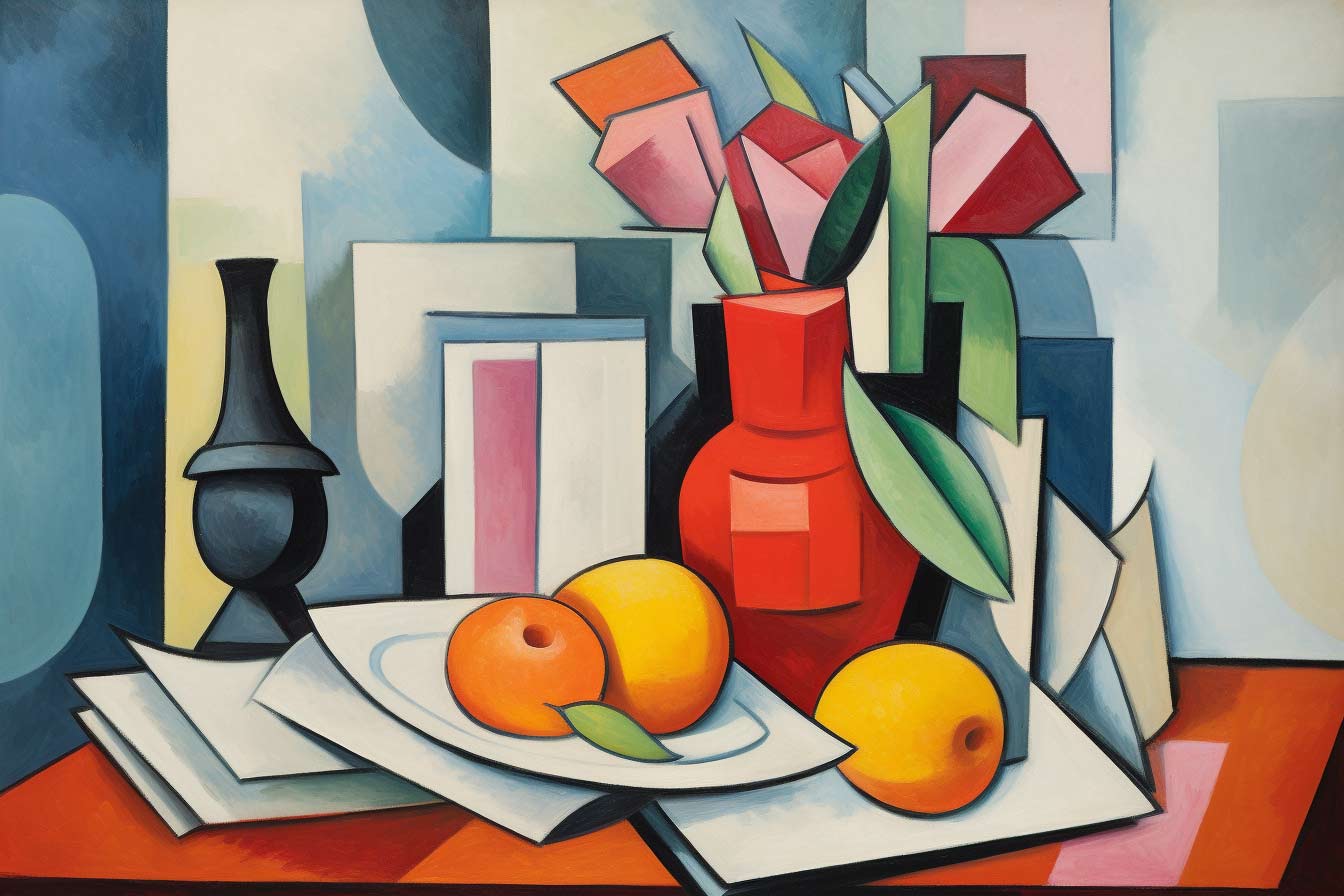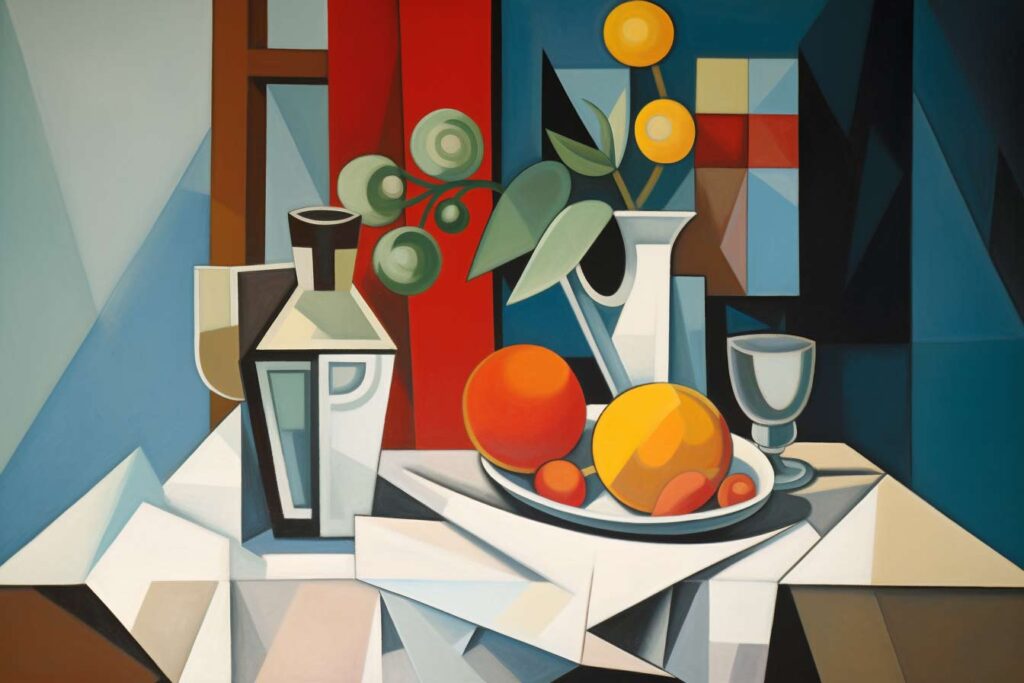The Evolution of Still Life
In the vast tapestry of art’s history, where threads of time intermingle and intertwine, there emerges a particular strand of expression known as Cubism. Yet, before we delve into the depths of its geometry and avant-garde nature, we must first traverse through the lands of its progenitor – Proto-Cubism – and bow in homage to the grandeur of Cézanne.
Cézanne: The Beacon of Transformation
Paul Cézanne, in his still life masterpieces, transcends mere representation. His works are not just lifeless depictions of tables adorned with fruits, vases, and books. No, they are investigations, interrogations of form and color, where every object becomes a symbol of life’s impermanence. Through his gaze, apples, pears, and draped cloths manifest as luminous entities, pulsating with a fervor for existence.
Now, imagine such a table, under the attentive hands of Cézanne. What would we see? Fruits, yes, but not just mere fruits. They are elemental forms, spheres and ovals, bathed in light, shadow, and the muted colors of earth and sun. The vases, too, morph from mere containers to geometric embodiments of the abstract. The books? Rectangular prisms that hint at the knowledge they contain.

Proto-Cubism: Bridging the Ancient and the New
Proto-Cubism, as its name suggests, is the precursor to the storm that Cubism became. It held onto the vestiges of the old, but with a longing gaze towards the horizon of the new. The forms in this period retained their semblance but started to break, to shift, and to metamorphose.
Drawing from Cézanne’s table, the Proto-Cubist artist would see the apple not just as an apple, but as a compilation of shapes. The vase would be dissected into its core geometric constituents. The books, no longer just carriers of wisdom but a harmonious juxtaposition of lines and angles.
Early Cubism: A Symphony of Shapes
By the time we reach early Cubism, the transformation is near complete. Here, the artists, like Picasso and Braque, distilled objects into their rudimentary geometric forms. Everything is broken down, analyzed, and then reassembled in a fragmented manner.
Our table from Cézanne’s atelier would undergo a metamorphosis. The fruits, now a concoction of interlocking shapes, play with perception, making one question the very essence of an apple or a pear. Vases are fragmented into shards of color and light. Books, reduced to a series of planes and angles, beckon the viewer to find meaning in their fractured form.
In terms of color, early Cubism is marked by a restraint, a muted palette that amplifies the interplay of form. Earthy browns, muted greens, and soft grays dance upon the canvas in a celebration of the essence, rather than the overt appearance of objects.
Cézanne’s table, with its fruits, vases, and books, serves as an allegory for the evolution of artistic thought. From the naturalism of Cézanne’s era to the abstract revelations of Cubism, the journey of still life is emblematic of art’s eternal quest to both see and represent the world in novel ways.
In the style of John Ruskin, we are reminded that art is not just a passive representation. It is an active engagement with the world, a continuous dialogue between the artist and the observer, forever pushing the boundaries of what we see and what we know.
